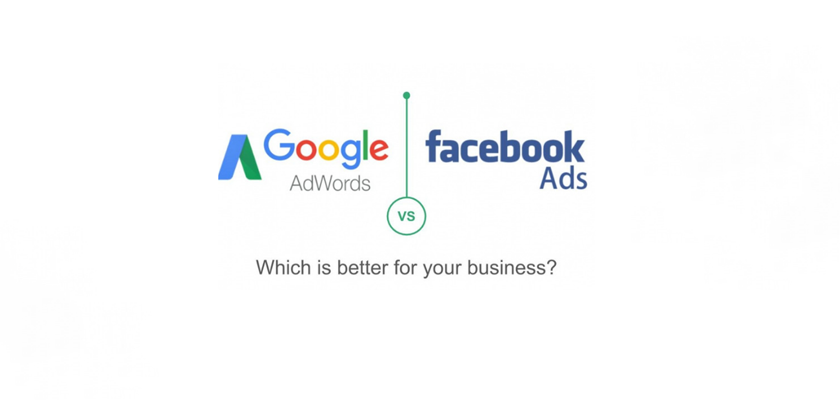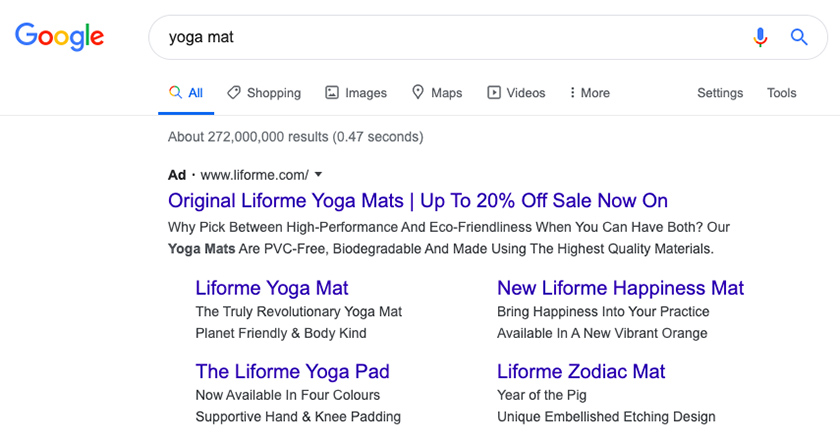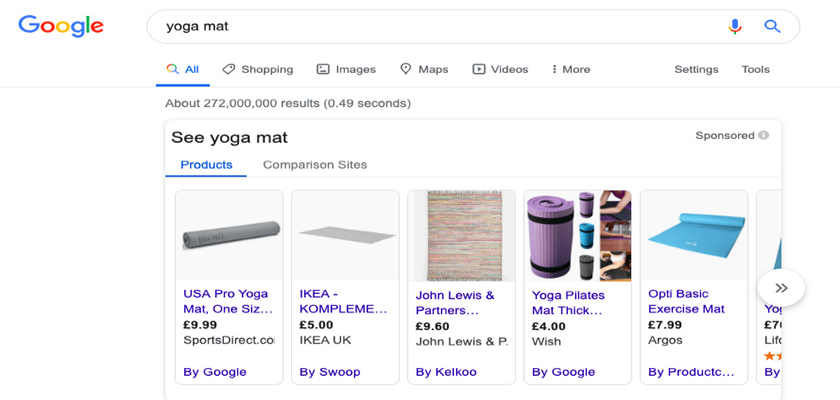
Each business shapes its marketing mix uniquely, whether through the blend of digital and traditional marketing methods, or the amalgamation of elements and avenues constituting a digital marketing approach.
This article aims to deliver a comprehensive initiation into two major paid advertising platforms: Google Ads (formerly known as Google AdWords) and Facebook Ads. The ultimate goal is to facilitate your decision-making process in selecting the most fitting channel for advertising your enterprise.
Before we delve in, it’s important to acknowledge that many businesses adeptly employ both platforms as integral components of their digital marketing tactics. This approach optimizes visibility and captures users across diverse points in the conversion journey.
Both Facebook and Google Ads fall under the broader umbrella of PPC (pay-per-click advertising), requiring advertisers to remunerate for each click or a thousand impressions. Consequently, both mediums demand payment for outcomes. Thus, the primary consideration before opting for either channel is your available budget.
Determining an advertising budget is a complex task. The suitability of an advertising budget significantly fluctuates for both platforms, contingent upon your industry, target audience, and other variables. To navigate this, prudent projection and foresight are advisable. Fortunately, both Facebook and Google furnish built-in planning tools to assist in this endeavor.
What Is Google Ads?
With over 3.5 billion daily searches, Google stands as the world’s most prevalent and extensively employed search engine. Through Google Ads, you gain the ability to position precise advertisements on the search results page, directly in front of your desired audience.
Within the context of this piece, the term ‘Google Ads’ will predominantly denote Search Engine Marketing via Google Search and Shopping, excluding the Google Display Network or YouTube – these will be mentioned as applicable.
In the realm of Google Search, the focus is on keyword targeting. Advertisers hold the power to select particular keywords or phrases aligned with their distinct product or service offerings. For instance, consider the example of a yoga accessory supplier who targets the keyword “yoga mat”:


Furthermore, it’s important to emphasize that Google Shopping exclusively accommodates the promotion of tangible products. Hence, it proves invaluable for presenting your merchandise inventory as an eCommerce enterprise. However, if your business is service-oriented, such as providing yoga classes or yoga teacher training courses, Google Shopping cannot be considered a viable channel within the Google Ads framework.
Advertisers also possess the capability to superimpose a variety of supplementary targeting choices in conjunction with their chosen keywords and product information. This encompassing selection involves:
- Location targeting: the ability to target users who are in (or interested in) particular countries, cities or even specific postcodes
- Ad schedule targeting: the ability to control whether ads show at particular times of the day or on particular days of the week
- Device targeting: the ability to target particular devices e.g mobile, desktop, tablet
- Demographic targeting: the ability to target users differently based on their gender, age, parental status and/or household income
- Audience targeting: the ability to target users that fall into particular audiences, which can include (among others):
- Website visitors/remarketing: users who have previously visited your website e.g all users over the past 30 days
- Similar audiences: a type of audience auto-generated by Google, which creates a group of users with similar characteristics to your existing remarketing audiences
- Affinity audiences: users grouped together based on their passions, habits and interests e.g fitness enthusiasts
- In-market audiences: users grouped together based on their recent purchase intent e.g in the market for fitness equipment
From the information provided earlier, it becomes evident that Google Ads can emerge as a remarkably potent approach for discovering fresh clientele for your enterprise. Both Google Search and Google Shopping Ads emerge subsequent to a user’s search query (such as “yoga mat”). This context implies that the user is conceivably contemplating a purchase, rendering their exposure to an advertisement highly impactful.
When coupled with the diverse array of targeting parameters at your disposal, astute bid and budget supervision, and the crafting of compelling ad content and visuals, advertisers possess the capacity to connect with the ideal audience, conveying the precise message, precisely when it matters most.
What Is Facebook Ads?
Through Facebook Ads Manager, you gain the capability to distribute advertisements across Facebook, Instagram, and the Audience Network. If you are an individual user of Facebook or Instagram, you are undoubtedly familiar with encountering advertisements while browsing. These promotions appear in various formats, including the newsfeed, stories, the Messenger app, and most recently, on Facebook Marketplace.
Here’s an illustration extracted from my Facebook Newsfeed:

Nonetheless, a fundamental distinction exists in how Facebook/Instagram operate compared to Google. Unlike Google, where users initiate searches that indicate intent, Facebook and Instagram users do not engage in the same manner before encountering an advertisement. Deciphering the intent of Facebook and Instagram users at any given point is more complex. While some might be in a purchasing mindset, others may have logged in to social platforms to connect with friends and family, consume news, or enjoy memes.
Yet, Facebook compensates for the challenges tied to user intent by offering an array of meticulously detailed audience targeting options, surpassing those found on Google Ads.
While Google Ads concentrates on keyword and product-oriented targeting, Facebook Ads assists users in locating businesses based on their identities. Beyond location and demographics, Facebook extends its demographic targeting to encompass life events (like engagements, marriages, relocations, pet adoption), parental status (down to the ages of a user’s children), and marital status.
Moreover, Facebook provides expansive interest and behavioral targeting alternatives, enabling advertisers to focus on users based on a wide array of traits. These include favored brands, hobbies, TV show preferences (interest targeting), alongside digital behaviors, consumer classifications, and travel patterns (behavioral targeting).

In addition, advertisers wield the power to construct remarketing audiences, which encompass users who have previously engaged with their websites or social profiles. Furthermore, there’s the concept of lookalike audiences. Facebook generates these by identifying users who share characteristics akin to your existing remarketing audiences.
Thanks to this extensive array of targeting capabilities inherent to Facebook, the platform proves to be an excellent arena for users to unearth new brands. Likewise, it serves as a source of inspiration, introducing them to fresh products and services from the brands they already hold an affinity for.
Are There Any Similarities Between Google Ads and Facebook Ads?
As emphasized earlier, the most pronounced distinction between the two platforms is the element of user intent: Facebook contrasting with Google Ads in this aspect. Nevertheless, they do exhibit notable shared attributes.
In both realms, after setting your budget and initially distributing it across campaigns, meticulous monitoring and optimization are crucial to attaining sought-after outcomes. Whether your goal is generating leads at a predefined cost or attaining a specific ROI, the careful adjustment of campaigns is essential.
Both platforms offer incentives to advertisers who present pertinent, top-tier ads to their target audience. This can manifest as improved ad delivery and potentially more cost-effective traffic.
The creation of such superior-quality ads demands expertise to ensure optimal delivery and effectiveness.
- To create high-performing ad creative and copy
- To effectively allocate (and reallocate) budgets
- Strategically apply select strategies (or manually manage bids)
- Apply appropriate targeting settings

As previously discussed in this article, there exists a certain degree of convergence in audience targeting capabilities between Google and Facebook. Although Facebook’s targeting criteria is notably more comprehensive than what Google offers, both platforms provide options for demographic, location, device, and interest targeting. Additionally, they offer features to construct your own remarketing lists and similar/lookalike audiences.
Consequently, when advertising on both platforms, the performance of audiences on one channel can provide insights to inform strategies on the other, and vice versa.
In the grand scheme, if you intend to initiate ad campaigns on either platform, I highly recommend considering some of the free online training courses offered by Google and/or Facebook. Alternatively, seeking assistance from a professional agency can also be beneficial. This proactive approach will substantially enhance your chances of optimizing your advertising budget effectively and circumventing wasteful expenditure.
Should I Choose Google Ads or Facebook Ads for My Business?
Now equipped with a comprehension of Google Ads and Facebook Ads, along with an awareness of their shared attributes, let’s delve into a discussion of the advantages and drawbacks associated with advertising on each platform.
Advantages of Google Ads
Volume – Google, being the world’s most prevalent and extensively utilized search engine, holds an esteemed position as a leader in the realm of online advertising. On a daily basis, a staggering 3.5 billion searches take place on Google. Furthermore, the frequency of Google searches escalates by 10% annually.
Intent – Google provides advertisers with unparalleled access to an extensive and unmatched potential user base. As previously examined, these users are actively in pursuit of products and services. When focusing on exceptionally pertinent, long-tail keywords (such as “purple yoga and barre mat”), the intention to make a purchase or generate leads from these users is virtually assured.
Advanced – Arguably, Google Ads stands as the most sophisticated advertising platform, affording advertisers entry to an unparalleled wealth of data and technical functionalities. These encompass automated bidding, responsive ad copy, and attribution reporting. Skillful interpretation of this data and adept utilization of these features can empower advertisers to enhance performance and yield better outcomes. The vast dataset offered not only facilitates an understanding of performance within the Google Ads interface but also extends to comprehending how these advertising endeavors impact performance across other digital channels.
Suitable for all industries – Google advertising is notably more suitable for specific industries where Facebook might not be as well-aligned. Consider scenarios like submitting an inquiry to a law firm, procuring car insurance, or engaging in property investment. On Facebook, the likelihood of a user scrolling through and instantaneously deciding to engage a law firm due to an enticing ad is lower. Conversely, leveraging Google Ads to feature your law firm can secure a prominent placement in the Search Engine Results Pages (SERPs), allowing you to capture customers who are actively seeking legal services. This highlights the distinction in approach where Google Ads capitalizes on user intent while Facebook might excel in different contexts.
Suitable for B2B – Google often proves to be a more prudent selection for those providing B2B (business-to-business) services or products. When individuals are faced with the responsibility of making a purchase while at work, their natural inclination is to turn to a search engine rather than perusing Instagram. This inherent behavior underscores the appropriateness of Google Ads for enterprises dealing in B2B training courses or commercial and industrial products. The platform’s alignment with the professional environment and search intent amplifies its effectiveness in these contexts.

Advantages of Facebook Ads
Certainly, the same principle holds true in the opposite direction when it comes to Facebook Ads.
Creating intent – Absolutely, you’ve highlighted a key aspect of Facebook Ads’ effectiveness. In scenarios involving products like luxury skincare items, where the purchase might not have been initially planned, Facebook Ads can excel. While a person might not be actively intending to buy skincare on a given day, a captivating ad on Facebook showcasing an unfamiliar yet appealing brand, or highlighting a sale or new product from a favorite brand, has the potential to prompt a purchase.
Facebook’s strength lies in capitalizing on such spontaneous purchase scenarios. Even when a user isn’t actively searching for a product on Google or in a purchasing frame of mind, the combination of precise audience targeting and engaging ad content on Facebook can effectively lead to a sale. The platform’s ability to tap into users’ interests, curiosity, and impulse-buying tendencies can generate conversions in moments when traditional search-based advertising might not have the same impact.
Reach – Indeed, Facebook boasts additional advantages. Despite having a smaller audience than Google, its potential reach remains far from insignificant. The platform is frequented by an approximately 1.66 billion daily active users, and a remarkable 66% of Facebook’s total audience engages on a daily basis. This impressive level of daily engagement underscores Facebook’s potential as a potent advertising channel to connect with a substantial portion of its user base. The combination of a sizable user pool and active participation makes Facebook an appealing avenue for reaching and engaging a diverse and substantial audience.
Targeting – Indeed, as previously explored, Facebook’s audience targeting prowess is unparalleled. This is due to the wealth of personal information people willingly share on the platform. From announcements of engagements to preferences in dining and snapshots of vacations, Facebook users reveal a broad spectrum of life details. Additionally, their interactions with content provide valuable insights into their interests, beliefs, ideologies, and values.
This rich trove of information offers advertisers the potential for remarkably precise targeting with their messaging and content. In this regard, Facebook often outshines Google in the degree of specificity achievable, enabling advertisers to tailor their communications with a level of precision that may not be as attainable through Google Ads.
Cost – In general, Facebook tends to be a slightly more cost-effective advertising platform than Google, often presenting lower Cost Per Click (CPC) rates. Particularly in certain industries, such as finance and insurance, Google’s CPCs can soar as high as $54! Given this context, for advertisers who are starting out with modest budgets, Facebook advertising might offer a more accessible avenue compared to Google.
However, it’s worth noting that due to Facebook’s extensive assortment of targeting possibilities and diverse ad formats, the platform can generate a favorable Return on Investment (ROI) across both restricted and substantial budgets. This underscores the potential for successful outcomes irrespective of the budget size.
Visuals – Indeed, Facebook’s inherently visual nature positions it as an ideal platform for promoting products and services that can be visually presented in an aesthetically pleasing manner. This particularly suits categories like fashion and beauty, health and fitness, and food and dining. Facebook’s ad formats, including carousel and collection ads, enable advertisers to employ multiple images and/or videos to effectively showcase their offerings. Additionally, story formats on Facebook are both disruptive and immersive, providing full-screen experiences that, when executed skillfully, are highly likely to capture a user’s attention. These features empower advertisers to create visually compelling campaigns that resonate with users and leave a lasting impact.

Disadvantages of Google Ads vs Facebook Ads
As implied earlier, certain industries or subjects that garner significant search volumes on Google can be associated with substantial costs and fierce competition.
Notably, domains like insurance, loans, mortgages, and legal services fall into this category. If your business operates within these sectors and your budget is constrained or if you’re a relatively new or less established brand, it can indeed be an uphill battle to distinguish yourself within the Search Engine Results Pages (SERPs).
On the opposite end of the spectrum, a different challenge arises. If you’re a nascent brand or offer a unique product or service, you might confront the issue of low search volume.
Essentially, this translates to minimal or even negligible search activity for your chosen keywords, resulting in insufficient traffic to your site. In this scenario, Facebook Ads could prove to be a more strategic choice. By utilizing Facebook Ads, you can elevate brand awareness among pertinent audiences. This, in turn, may lead to increased brand searches in the future as your audience becomes more familiar with your offerings, potentially circumventing the initial lack of keyword searches.
Disadvantages of Facebook Ads
Inherent to Facebook and Instagram is their strong visual orientation, which proves beneficial in certain scenarios. However, specific sectors might encounter amplified difficulties. Crafting an appealing Instagram story to display car insurance offerings, for instance, contrasts distinctly with introducing a fresh line of lipsticks.

Furthermore, not all enterprises possess internal creative and design capabilities, leading to potential costs in generating top-tier advertising content, especially videos. This stands in stark contrast to Google Ads, where the requirement is simply to compose a concise description of your product or service for ad publication.
Adding to this, the Facebook Ads platform holds a somewhat less evolved status compared to Google Ads (Google Adwords emerged in 2000, while Facebook Ads made its debut in 2007). The suite for gauging, attributing, and reporting exhibits less comprehensive features and is generally regarded as somewhat less precise. It’s often critiqued for favoring Facebook’s performance in its reports.
So What’s Next?
For numerous businesses, the pivotal query shouldn’t revolve around choosing between Google Ads and Facebook Ads. Instead, the focus lies in orchestrating a symbiotic utilization of the strengths inherent in both advertising platforms, thereby optimizing visibility and effectively targeting users across distinct phases of the conversion expedition.
The existing echelons of brand recognition, the sector of operation, and the specific products or services being endorsed all exert influence on the strategic approach to advertising on these platforms. Leveraging Facebook Ads can stimulate brand recognition and showcase novel offerings, whereas Google Ads excels at capturing individuals actively seeking pertinent products and services.
Ultimately, the collective prowess of Google Ads and Facebook Ads presents advertisers with indispensable tools to propel the growth and expansion of their enterprises.
What do you think?
Leave a Reply
Your email address will not be published. Required fields are marked *










Leave a Reply